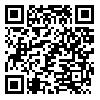BibTeX | RIS | EndNote | Medlars | ProCite | Reference Manager | RefWorks
Send citation to:
URL: http://tumj.tums.ac.ir/article-1-938-en.html
Background: In the year 2003, an earthquake in Bam led to death and injury of many of the inhabitants. The aim of this study was to the changes in opioid drug use in the survivers eight months after the earthquake in comparison with the month before the quake and its related factors.
Methods: An epidemiologic survey was carried out on 779 survivors, selected by desert sampling from the Bam citizens in the age of 15 and over. Bivariate and multivariate Logestic regression analysis were done for examining the relationship between an increase in opioid use and various factors.
Results: An increase in opioid use was reported in 18.3 percent of men and 2.3 percent of women. Odds Ratio (OR) for increase in opioid use was 9.4 times more in men than in women (95% CI=4.9-18.0). In men, increase in opioid use was related with the history of opioid use during the month before earthquake (OR=5.6, 95% CI=2.4-13.1), age (OR in age group 30 to 44 was 4.7 times more than age below 30, with 95% CI from 1.8 to12.1), and PTSD (OR=3.7, 95% CI=1.5-9.2). In women, it was only related to the history of opioid use during the month before earthquake (OR=43.8, 95% CI=12.5-154.0).
Conclusion: The findings show that following disasters, especially in the areas or groups that drug use is common, an increase in the drug use might occur. In these situations provision of preventive and treatment interventions particularly for at risk population is necessary.
| Rights and permissions | |
 |
This work is licensed under a Creative Commons Attribution-NonCommercial 4.0 International License. |





